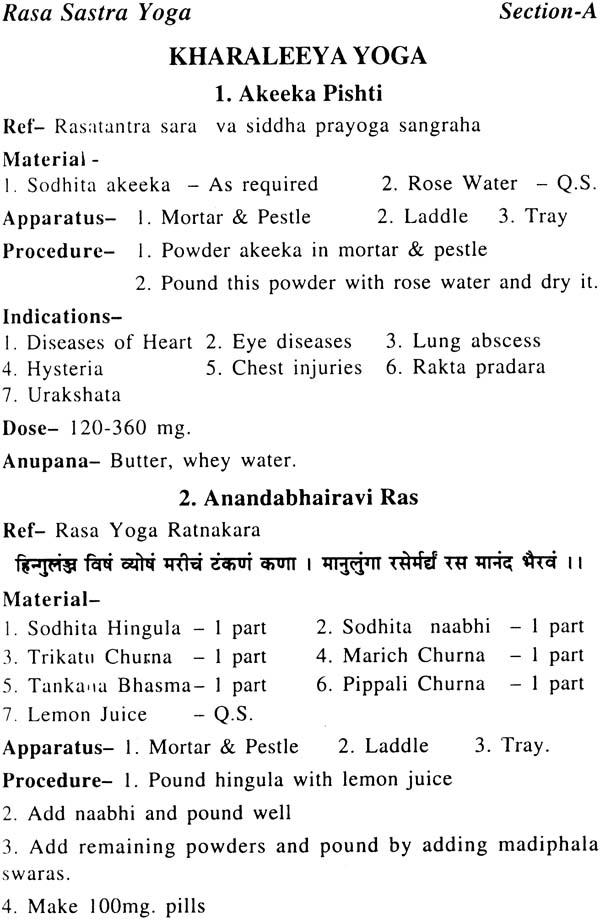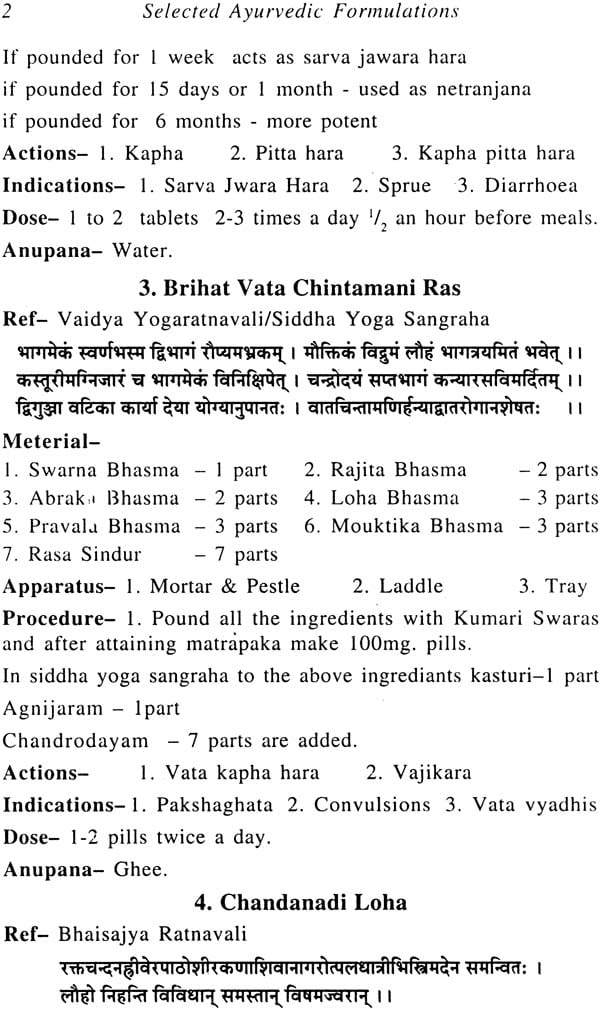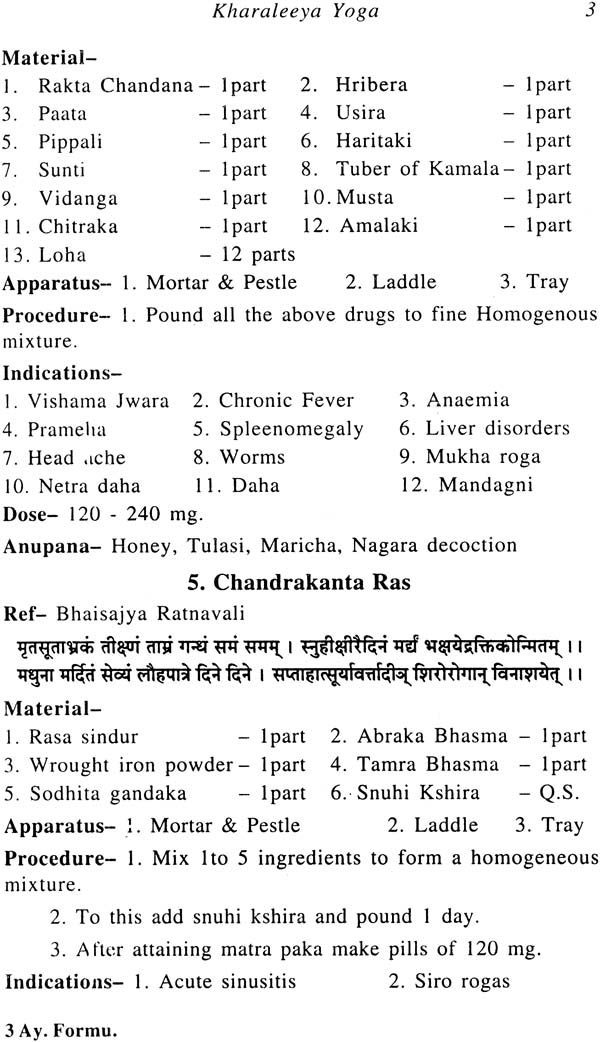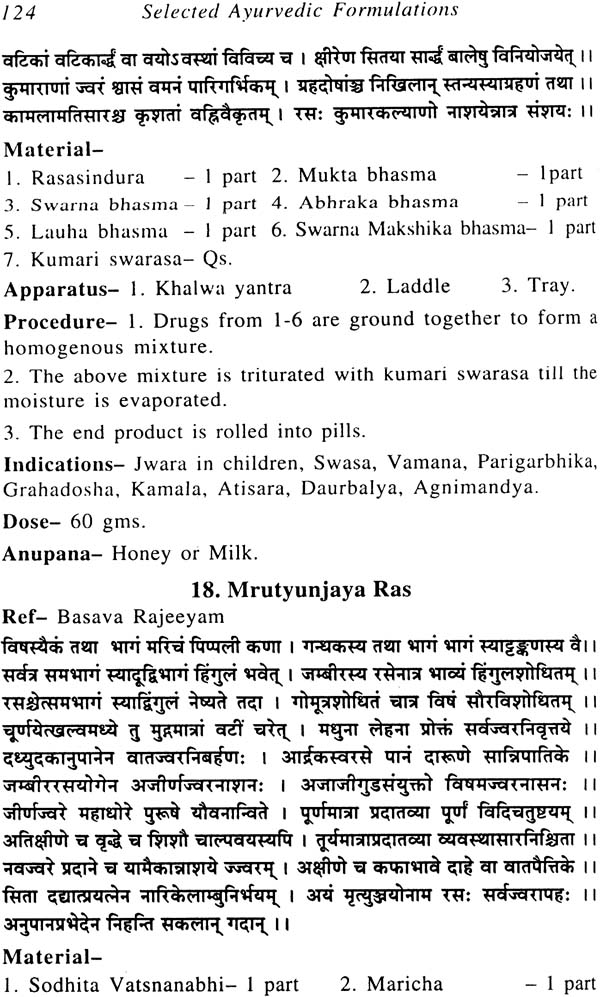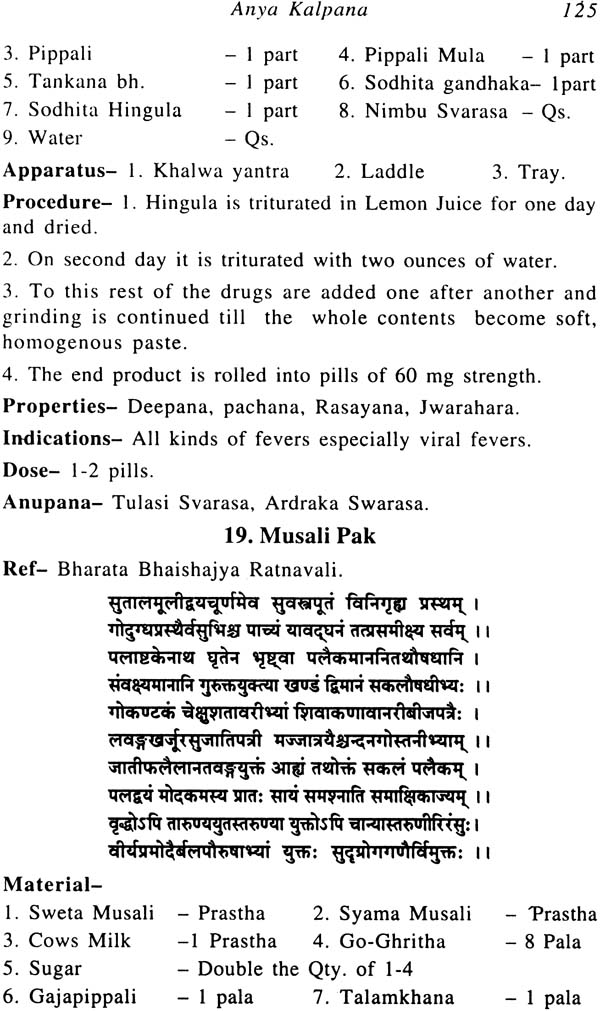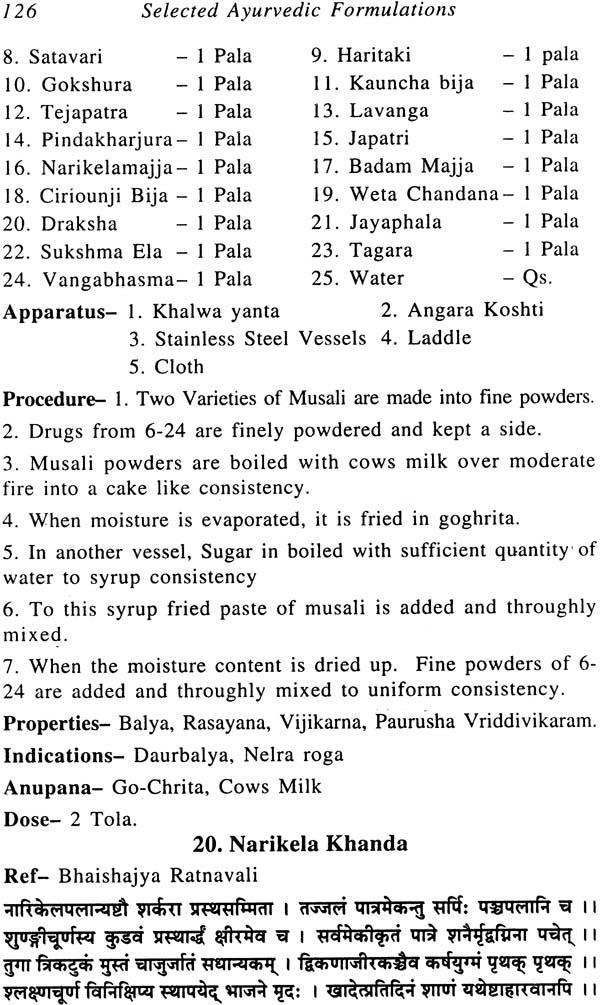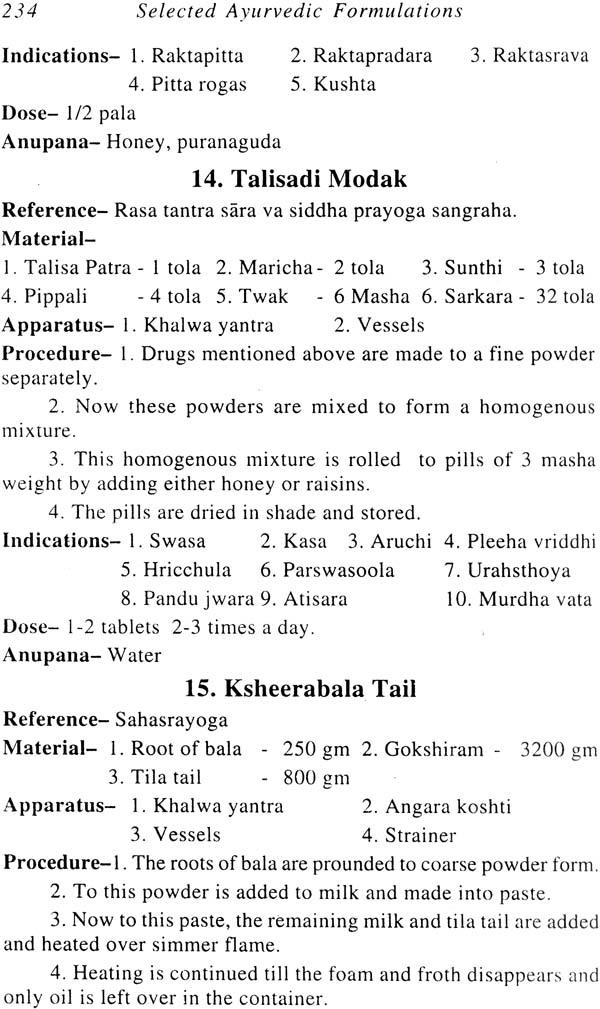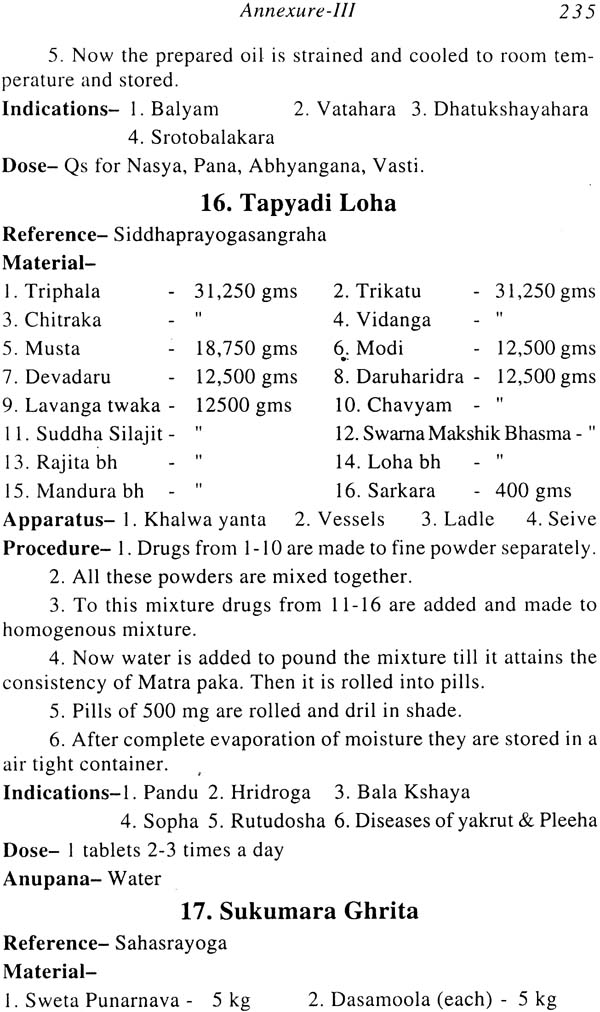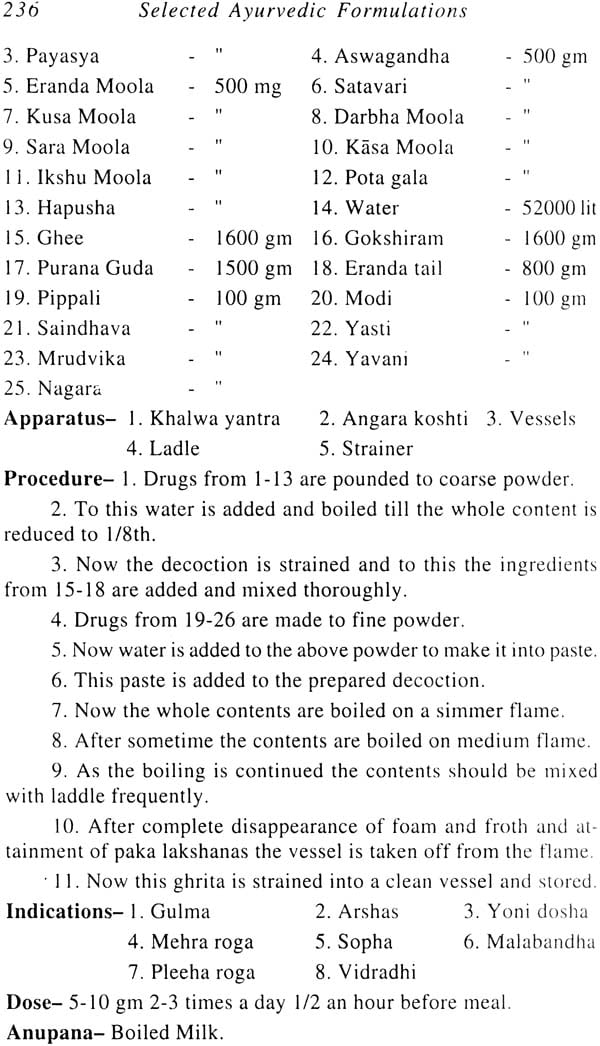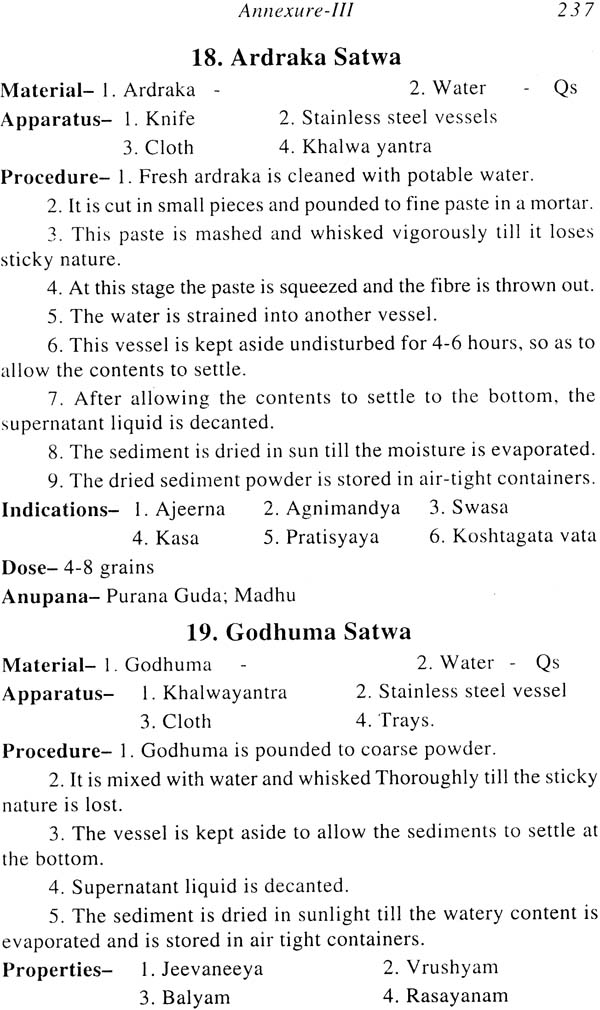
Ayurveda Formulations
Book Specification
| Item Code: | NAI249 |
| Author: | Dr. K. Nishteshwar |
| Publisher: | CHAUKHAMBHA ORIENTALIA, Varanasi |
| Language: | Sanskrit Text with English Translation |
| Edition: | 2007 |
| ISBN: | 9788176370370 |
| Pages: | 258 |
| Cover: | Hardcover |
| Other Details | 8.5 inch x 5.5 inch |
| Weight | 420 gm |
Book Description
Ayurvedic Materia Medica contains the drugs belonging to plant, animal and mineral in origin. In addition to the single drug recipes, poly—herbal formulations and herbo-mineral formulations have also been incorporated by various authors who have documented their clinical experience and passed on the knowledge to the generations in the management of various diseases. During medieval period with the advent of Rasashastra certain heavy metals and minerals have been incorporated into Ayurvedic therapeutics.
Mercury, the liquid metal which seems to have been originally used in tantric rituals and referred in Ayurvedic classics (1000 B.C.) came into extensive and intensive mercurial operations of nearly ten centuries not yielding any results, gold remaining elusive and immortality only a dream, many of the intermediary products of alchemical process are found to posses medicinal properties. The minerals, metals, alkalies and salts were administered either singly or in combination with vegetable drugs for different diseases. Many a new recipes could thus be formulated appropriate to the disease. All such preparations came to be called as Rasayana. Slowly Rasayana tantra incorporated into Ayurveda and came to enjoy a prestigious place with its shortened name Rasasastra.
This new change reflected in the literature from 13th century A.D. onwards. Works of post Vagbhata period, reflect this development. The period between 800 and 1110 A.D. described as evolutionary era. During this period good number formulations consisting of metals and minerals have been incorporated into the Ayurvedic therapeutics.
The works like Vrindamadhava, chakradatta, Gadnigraha, Rasendra Sara Sangraha compiled during that time incorporated several herbo-mineral formulations. After 15th century A.D., the works like Bhavaprakasa Samhita, Yoga Ratnakaram, Vaidya Chintamani and Basava Rajeeya have quoted good number of herbo-mineral preparations.
According to the Ayurvedic formulatory of India, published by ministry of Health and Family Welfare, Government of India, it is estimated that there are about 1000 single drugs and about 8000 compound formulations of recognised merit are in vogue in the current clinical practice. The formulations consisting of Kashtaushadhis (herbs) are categorized under different kalpanas namely Kashaya, Phanta, Hima, Avaleha, Sandhana. Ghrita, Taila and Churna etc. The resaushadis mainly consist of Kupipakwa and Kharaleeya Rasa yoga. In view of the palatability, lesser dosage, quicker action and longer shelf life, the formulations containing metals and minerals are preferred to pure herbal formulations.
In the ancient times and till recent past, the practicing physician used to process the medicine on his own according to the need and suitability of his patients. In the course of time, with the increasing population and busy life style, physician started depending on pharmaceutical industry for his drug requirement. Even the patient is showing more inclination to obtain the readymade drug from the manufacturer instead of obtaining it from the practicing physician.
In view of the increasing needs of the population and shortage of authentic raw material the Government is forced to bring some sort of uniformity in manufacturing of Ayurvedic medicines and evolved statutory control to ensure standards for Ayurvedic drugs.
In this book an attempt has been made to compile the authentic information regarding the formulations given in the subjects of Rasashastra and Bhaishajyakalpana (both theory and practical) of C.C.I.M. curriculum along with the most popular, reputed and widely used formulations of Andhra Pradesh Govt. Ayurvedic formulary under three sections.
We hope that this book shall serve the purpose of a ready reckoner and meet the academic needs of students of Ayurveda during their course of study both at under-graduation and post-graduation level. We also hope this book shall serve as a useful tool to meet the requirement of the practicing physician and as a reference guide for pharmaceutical industry.
We acknowledge M/s Chowkambha Orientalia, Varanasi for publishing this book.
| Chapter | Page No. |
| Section- A | |
| Rasa Sastra Yoga | |
| I. Kharaleeya Yoga | 1-25 |
| II. Kupipakwa Yoga | 26-33 |
| III. Parpati Yoga | 34-41 |
| IV. Others | 42-49 |
| Section- B | |
| Bhaishajya Kalpana Yoga | |
| I. Kashaya Kalpana | 50-57 |
| II. Sneha Kalpana | 58-73 |
| III. Sandhana Kalpana | 74-82 |
| IV. Avaleha Kalpana | 83-87 |
| V. Churna Kalpana | 88-90 |
| VI. Guggulu Kalpana | 91-95 |
| VII. Gutika Kalpana | 96-101 |
| VIII. Lepa Kalpana | 102-103 |
| IX. Visishta Kalpana | 104-112 |
| XI. Anya Kalpana | 113-139 |
| Section - C | |
| Anubhuta Yoga | |
| I. Tablets | 140-144 |
| II. Avaleha | 145-146 |
| III. Ointments | 147-152 |
| IV. Oils | 153-157 |
| V. Liquids | 158-160 |
| VI. Other | 161-163 |
| Secion- D | |
| Annexure-I | |
| Rasa Sastra Yoga | 164-178 |
| I. Sodhana | 179-196 |
| II. Marana | 197-207 |
| Annexure-II | |
| Bhaishajya Kalpana | 208-219 |
| Sodhana | 220-226 |
